Discover 20 hidden attractions, cool sights, and unusual things to do in Hangzhou (China). Don't miss out on these must-see attractions: West Lake, Leifeng Pagoda, and Hangzhou Museum. Also, be sure to include Liuhe Pagoda in your itinerary.
Below, you can find the list of the most amazing places you should visit in Hangzhou (Zhejiang).
Table of Contents
West Lake
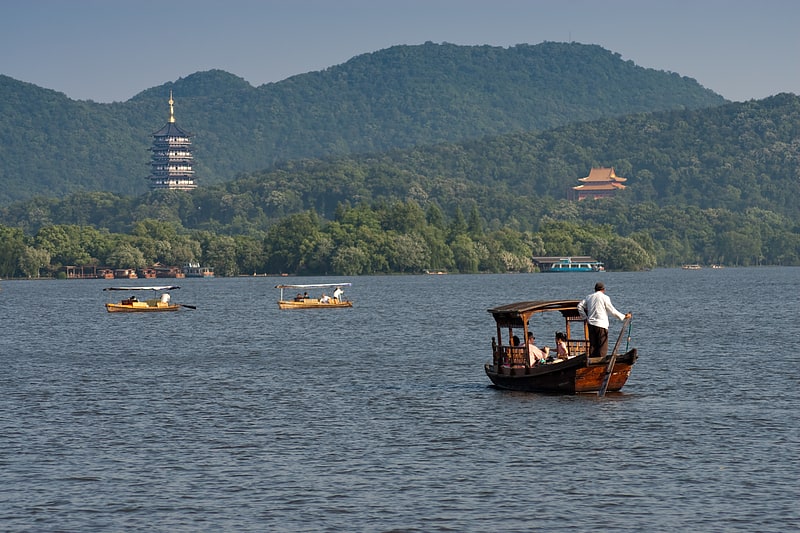
Also known as: 西湖
Lake in China. West Lake is a freshwater lake in Hangzhou, China. It is divided into five sections by three causeways. There are numerous temples, pagodas, gardens, and natural/artificial islands within the lake. Gushan is the largest natural island and three artificial islands: Xiaoyingzhou, Huixin Pavilion, and Ruan Gongdun stand at the middle of the lake. Leifeng Pagoda and Baochu Pagoda are separated by the lake. Mirroring each other, the basic pattern of "one mountain, two towers, three islands, three banks, and five lakes" is formed.
West Lake is located at No. 1 Longjing Road, Xihu District, Hangzhou City, Zhejiang Province, in the west of Hangzhou City. The total area of the scenic spot is 49 square kilometers, the catchment area is 21.22 square kilometers, and the lake area is 6.38 square kilometers.
West Lake has influenced poets and painters throughout Chinese history for its natural beauty and historic relics, and it has also been among the most important sources of inspiration for Chinese garden designers. It was made a UNESCO World Heritage Site in 2011, described as having "influenced garden design in the rest of China as well as Japan and Korea over the centuries" and reflecting "an idealized fusion between humans and nature".[1]
Leifeng Pagoda

Also known as: 雷峰塔
Reconstructed 5-story pagoda. Leifeng Pagoda is a five story tall tower with eight sides, located on Sunset Hill south of the West Lake in Hangzhou, Zhejiang, China. Originally constructed in the year AD 975, it collapsed in 1924 but was rebuilt in 2002. Since then, it has become a popular tourist attraction.[2]
Address: 15 Nanshan Rd., Hangzhou
Hangzhou Museum
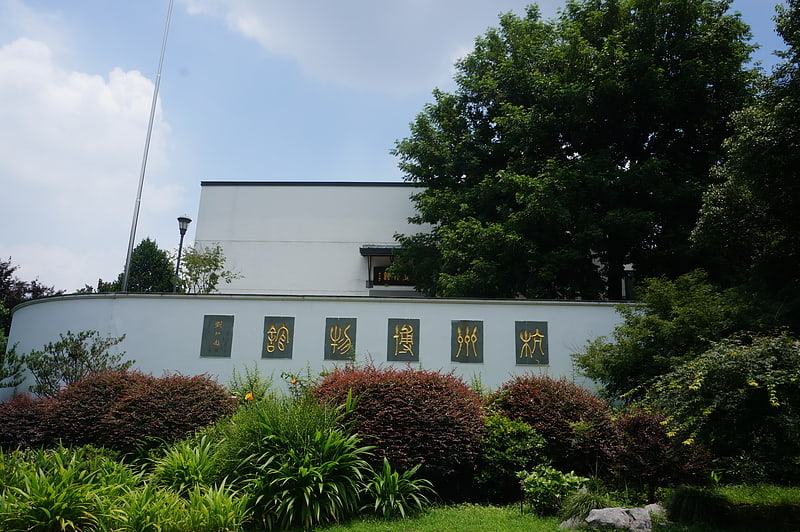
Museum in Hangzhou, China. Hangzhou Museum, formerly "Hangzhou History Museum", is a national first-grade museum in Hangzhou, Zhejiang, China.[3]
Liuhe Pagoda

Also known as: 六和塔
Historic 70-ft. pagoda by Qiantang River. Liuhe Pagoda, literally Six Harmonies Pagoda, is a multi-story Chinese pagoda in southern Hangzhou, Zhejiang province, China. It is located at the foot of Yuelun Hill, facing the Qiantang River. It was originally constructed in 970 by the Wuyue Kingdom, destroyed in 1121, and reconstructed fully by 1165, during the Southern Song dynasty.[4]
Baochu Pagoda

Also known as: 保俶塔
Landmark pagoda atop Precious Stone Hill. Baochu Pagoda is a pagoda in Hangzhou, Zhejiang province, China. Known as one of the landmarks of the West Lake, it is located just north of the lake on top of Precious Stone Hill. Its small base supports seven stories and gives it a distinctively slender and elegant appearance.
The name Baochu, translated directly, means "protect Chu", who, legend has it, refers to Qian Chu, the last king of Wuyue. As the story goes, one of Qian Chu's ministers had the temple constructed for prayers to be said for his safe return from a trip he had taken to Kaifeng, then under the rule of the Northern Song dynasty, in central China. He had been summoned there by the Emperor Taizu of Song and had been gone many days with no news of his return.
It was originally constructed in 963 and stood nine storeys tall. Its most recent reconstruction, in 1933, left it slightly shorter, seven storeys, and it has most recently had its lantern replaced on its top, though its previous one is on display near the pagoda. It is constructed of brick and stone and contains no internal staircase. The tower lies next to a path that runs the length of West Lake's northern mountain range and is accessible by both dirt paths and cement stairs from nearly every side of the mountain.[5]
Zhejiang Provincial Museum
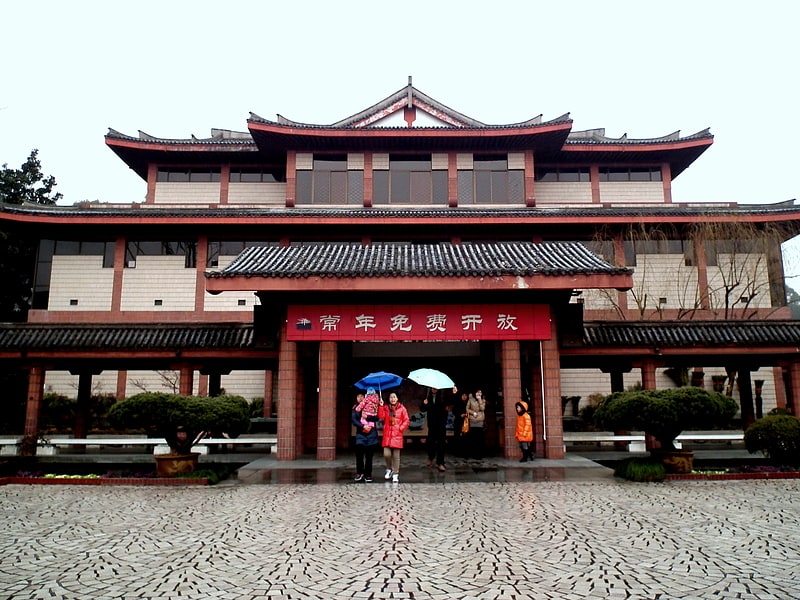
Also known as: 浙江省博物馆
Museum. The Zhejiang Provincial Museum is the provincial museum of Zhejiang, China, located in Hangzhou. It was established in 1929 as the West Lake Museum on the Gushan Island in the West Lake. It houses over 100,000 items in its permanent collection. On 22 December 2009, a new building was inaugurated on the West Lake Cultural Square near the Wulin Square, next to the Grand Canal. It has 7,600 square metres of display space, twice as much as the Gushan building.[6]
Address: 孤山路25号 25 Gushan Rd., Hangzhou
China National Tea Museum
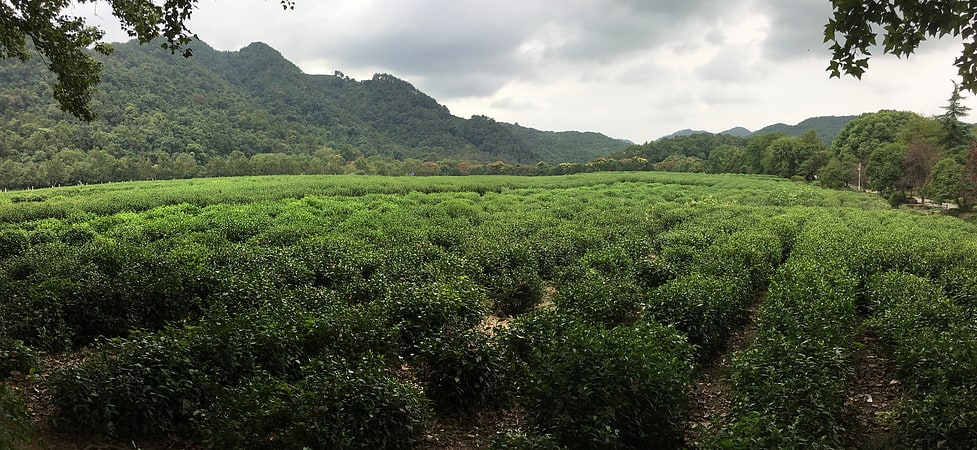
Also known as: 中国茶叶博物馆
Museum. The China National Tea Museum is located in Hangzhou, Zhejiang province, China. The exhibitions display tea production, and different kinds of tea. Exhibitions are in Chinese and English languages.[7]
Hangzhou Zoo

Also known as: 杭州动物园
Zoo in Hangzhou, China. Hangzhou Zoo is a zoo in Hangzhou, Zhejiang province, China.[8]
Address: 虎跑路40号 Hupao Rd., Hangzhou
Qiantang River Bridge
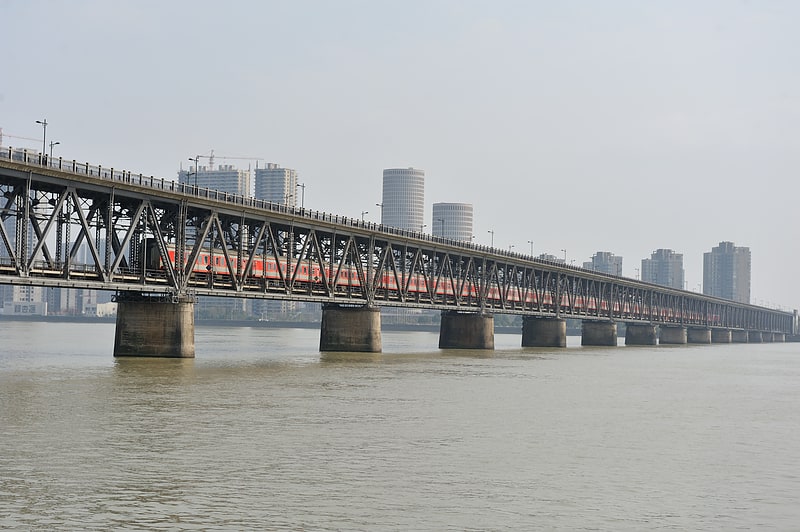
Also known as: 钱塘江大桥
Beam bridge in Hangzhou, China. The Qiantang River Bridge is a road and railway bridge across the Qiantang River at Hangzhou in Zhejiang Province, China.[9]
Phoenix Mosque
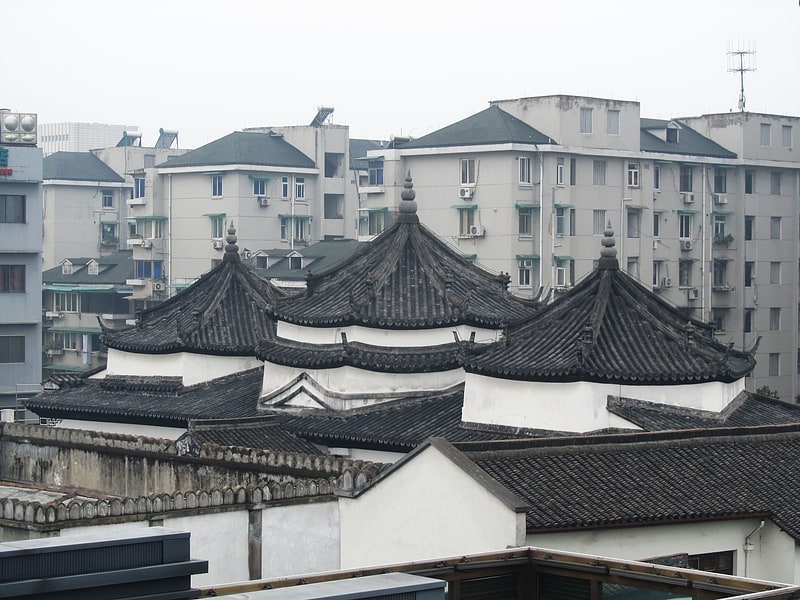
Also known as: 凤凰寺
Mosque in Hangzhou, China. Phoenix Mosque is a mosque in Hangzhou, Zhejiang, China. It is known for being one of the four great mosques of China. It is also one of the earliest mosque built in China. The origin of this mosque dates back to Tang or Song dynasty.
The Phoenix Mosque had been rebuilt several times. It was first destroyed around the end of Song dynasty. During the following Yuan dynasty, in 1281, the mosque was repaired under the financial assistance of Ala al-Din, an Arab clergyman in China. The minaret of the mosque was removed in 1928 due to the construction of adjacent roads. In 1953, it went through a complete maintenance and repair.
The structure of the main building was heavily influenced by traditional Chinese Architecture while also retaining features of Islamic Architecture. The existing prayer hall was built in the year of 1281 during the rule of Kublai Khan.[10]
Liangzhu Museum

Also known as: 良渚博物院
Museum in Hangzhou, China. The Liangzhu Museum is an archaeological museum dedicated to the Neolithic Liangzhu culture. It houses a collection of artefacts from the archaeological culture. It is located in Liangzhu, in the northwestern outskirts of Hangzhou, the capital of Zhejiang Province, China.[11]
Manao Temple
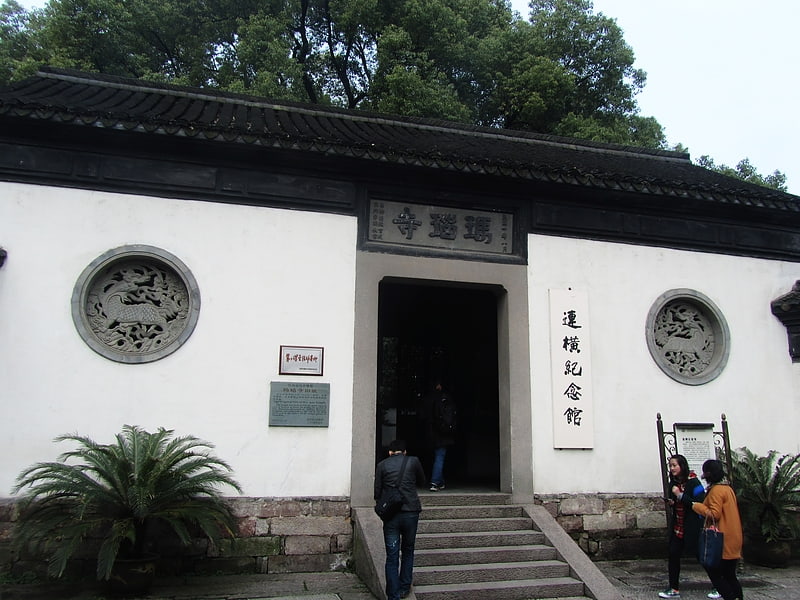
Temple in Hangzhou, China. Manao Temple is a former Buddhist temple located in Xihu District of Hangzhou, Zhejiang.[12]
Wenlan Pavilion
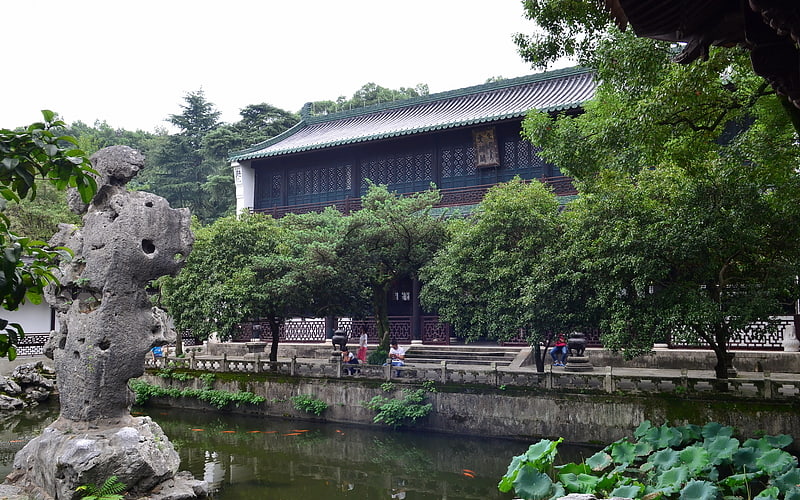
Scenic spot in Hangzhou, China. The Wenlan Pavilion, also known as the Imperial Wenlan Library, Imperial Library or Wenlan Ge, is a library and garden located in Hangzhou, Zhejiang Province, China. The library was one of the seven major collections of books built by the Qianlong Emperor of the Qing dynasty to house the Siku Quanshu and the only surviving one among the southern collections.[13]
Address: 25 孤山路, Hangzhou
Mituo Temple

Temple. Mituo Temple is a former Buddhist temple located in Xihu District of Hangzhou, Zhejiang.[14]
Xixi National Wetland Park
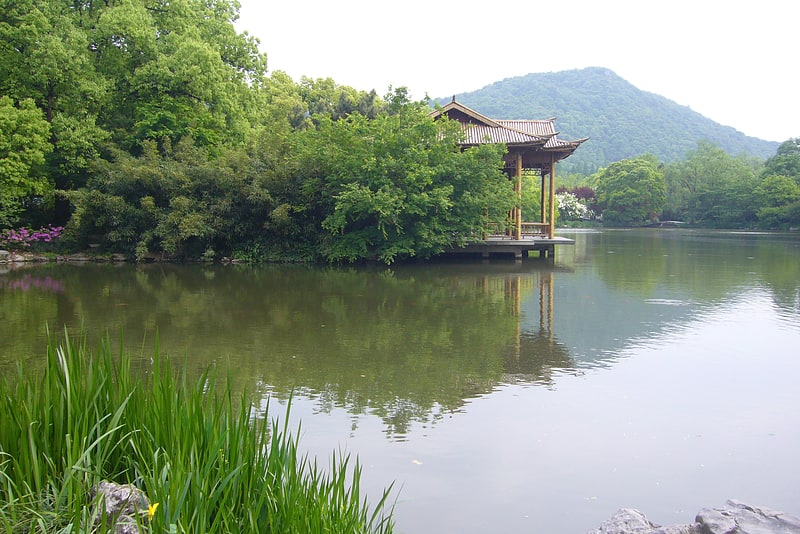
Also known as: 西溪濕地
Wetlands with eateries and festivals. Xixi National Wetland Park is a national wetland park in China, located at the west part of Hangzhou, Zhejiang province, a total of 1,150 hectares. The park is densely crisscrossed with six main watercourses, among which are scattered various ponds, lakes and swamps.
XiXi Wetland has a history of more than 4000 years and an abundant cultural heritage. It's the original site of Chinese South Opera; it has a traditional dragon boat contest; it contains the vivid life of a water village, featuring silkworm feeding and silk production.[15]
Address: 518 Tianmushan Rd., Hangzhou
Lingyin Temple
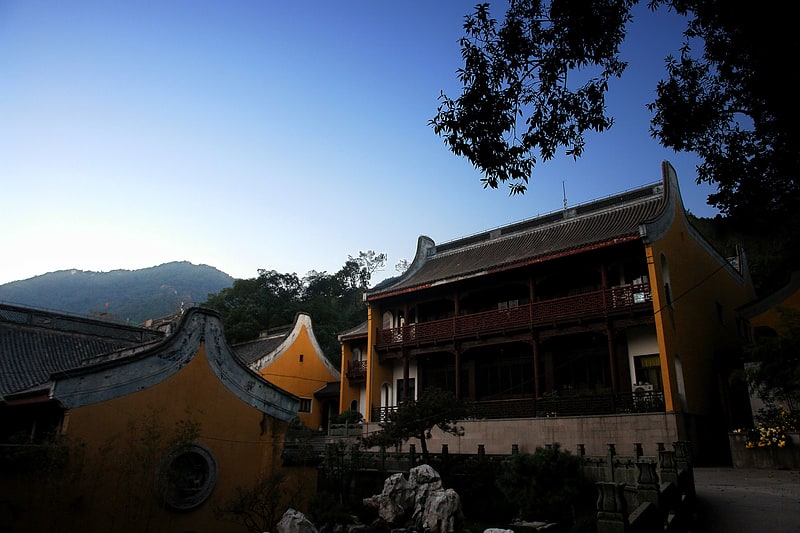
Also known as: 灵隐寺
Buddhist temple from the 4th century. Lingyin Temple is a Buddhist temple of the Chan sect located north-west of Hangzhou, Zhejiang Province, China. The temple's name is commonly literally translated as Temple of the Soul's Retreat. It is one of the largest and wealthiest Buddhist temples in China, and contains numerous pagodas and Buddhist grottoes.
The monastery is the largest of several temples in the Wulin Mountains (Chinese: 武林山; Pinyin: Wǔlínshān), which also features many grottos and religious rock carvings, the most famous of which is the Feilai Feng (Traditional Chinese: 飛來峰石窟; Simplified Chinese:飞来峰石窟; literally: "the peak that flew hither").[16]
Hangzhou Library
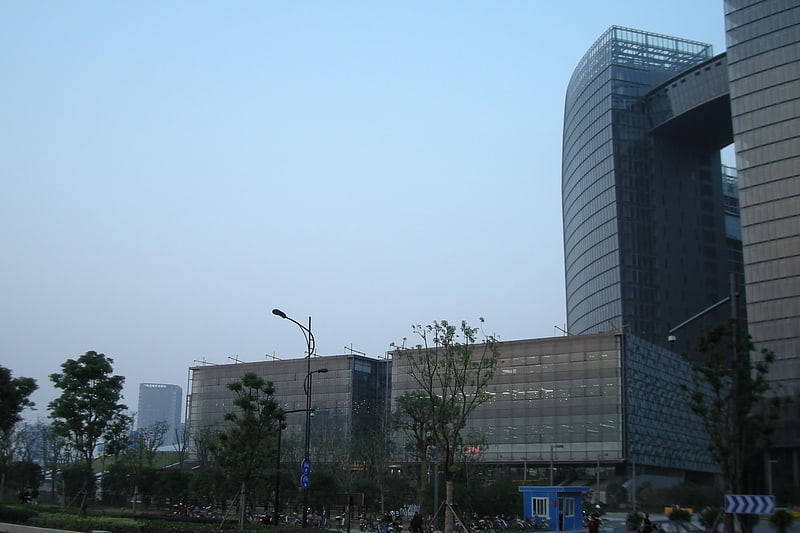
Public library. The Hangzhou Library is a public library located at East Jiefang Road, Jianggan District of Hangzhou, Zhejiang. Hangzhou Library has a collection of over 2.8 million items, with 31 thousand newspapers, 40 thousand Republic of China-era books, 5058 ancient books, and 1 thousand and 4 hundred rubbings.[17]
Dreaming of the Tiger Spring
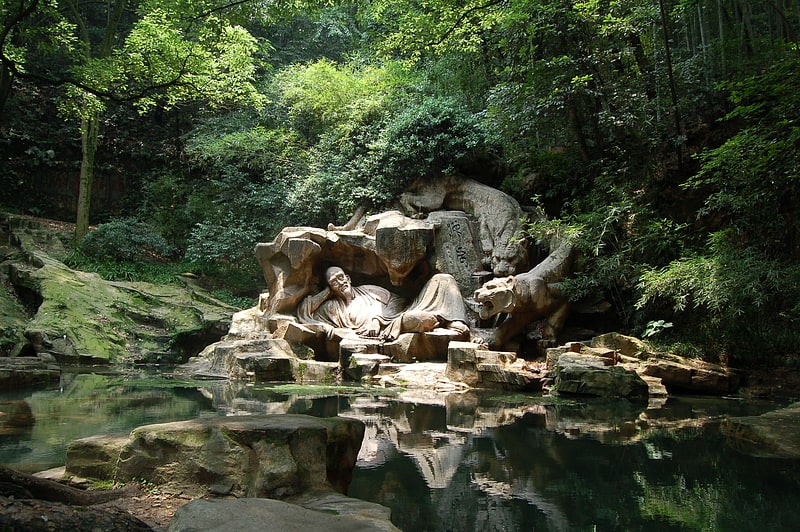
Also known as: 虎跑泉
Attraction in Hangzhou, China. Hupao or Dreaming of the Tiger Spring is a spring and park in southwestern Hangzhou, Zhejiang province, China.
The water from the spring itself seeps out from quartzite and is regarded as among the finest in China. The water is popular for brewing teas, such as the local specialty, Longjing tea.
Tiger spring is also the burial place of monk Jigong.[18]
Grand Canal
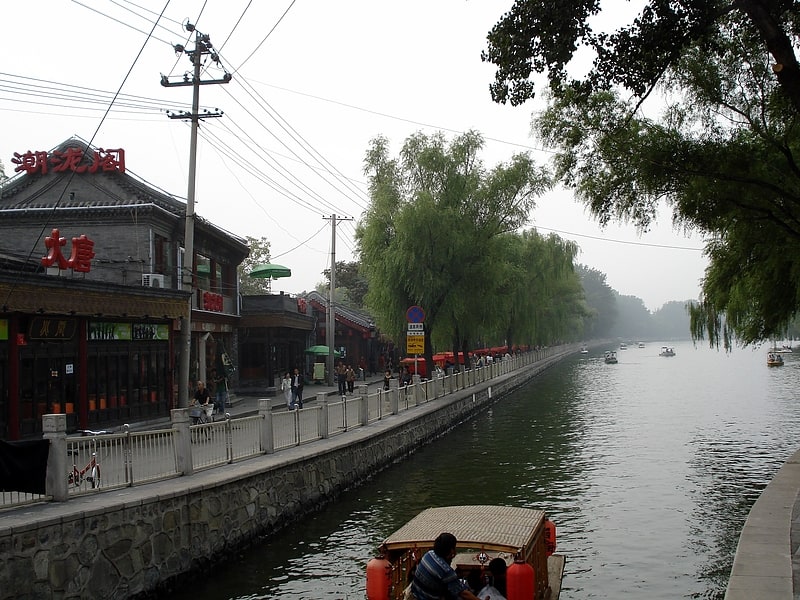
Also known as: 大运河
River in China. The Grand Canal, known to the Chinese as the Jing–Hang Grand Canal, a UNESCO World Heritage Site, is the longest canal or artificial river in the world. Starting in Beijing, it passes through Tianjin and the provinces of Hebei, Shandong, Jiangsu, and Zhejiang to the city of Hangzhou, linking the Yellow River and Yangtze River. The oldest parts of the canal date back to the 5th century BCE, but the various sections were first connected during the Sui dynasty. Dynasties in 1271–1633 significantly restored and rebuilt the canal and altered its route to supply their capital. The Grand Canal played a huge role in reunifying north and south China. The canal was built by conscripted laborers and connected the Yellow River in the north with the Yangtze River in the south, which made it much easier to transport grain from the south to the centers of political and military power in north China.
The total length of the Grand Canal is 1,776 km (1,104 mi). Its greatest height is reached in the mountains of Shandong, at a summit of 42 m (138 ft). Ships in Chinese canals did not have trouble reaching higher elevations after the pound lock was invented in the 10th century, during the Song dynasty (960–1279), by the government official and engineer Qiao Weiyue. The canal has been admired by many throughout history including Japanese monk Ennin (794–864), Persian historian Rashid al-Din (1247–1318), Korean official Choe Bu (1454–1504), and Italian missionary Matteo Ricci (1552–1610).
Historically, periodic flooding of the Yellow River threatened the safety and functioning of the canal. During wartime, the high dikes of the Yellow River were sometimes deliberately broken in order to flood and thus sweep away advancing enemy troops. This would cause disaster and prolonged economic hardships for local residents. Despite temporary periods of desolation and disuse, the Grand Canal furthered an indigenous and growing economic market in China's urban centers from the Sui period onwards to the present. It has allowed faster trading and has thus improved China's economy. The portion south of the Yellow River remains in heavy use by barges carrying bulk materials and containers.
The Grand Canal played a major role during the Great Leap Forward as it provided an efficient way to transport grains.[19]
Cathedral of the Immaculate Conception
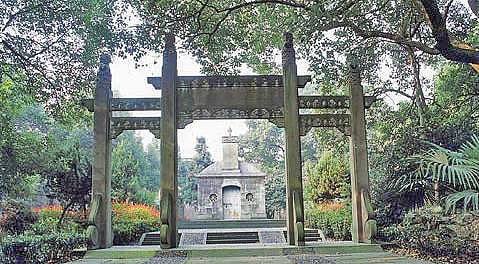
Also known as: 杭州圣母无原罪主教座堂
Cathedral in Hangzhou, China. The Cathedral of Our Lady of the Immaculate Conception is a Roman Catholic cathedral, located at 415 Zhongshan Road North not far from Wulin Square in downtown Hangzhou, China. Since it is the only Catholic church currently in service within the city of Hangzhou itself, it is also known simply as Tiānzhǔ Táng or "the Catholic church".[20]